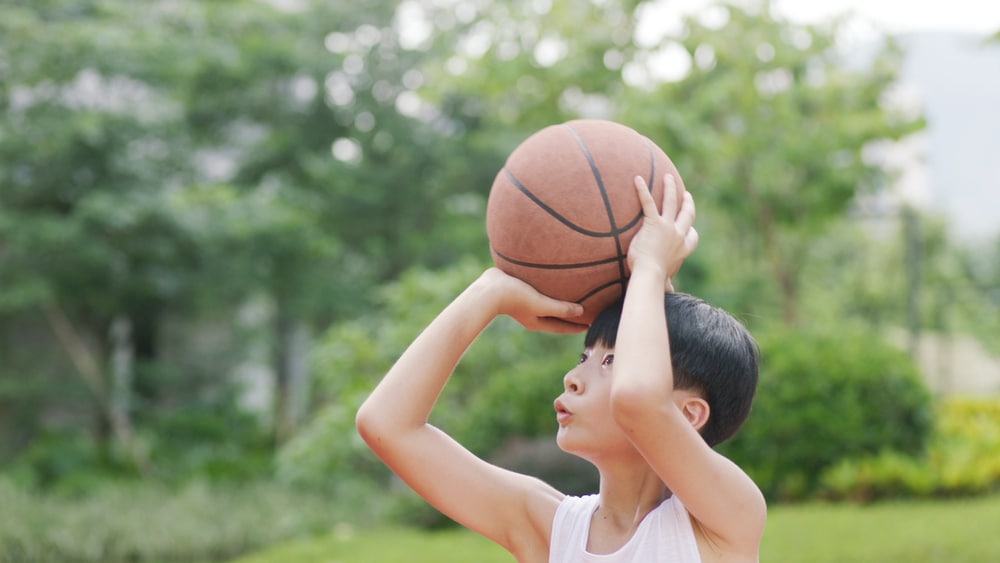Height Increase through Sports: A Myth or Reality?
In today’s fast-paced world, organised sports have emerged as a pivotal component in the lives of children and adolescents, shaping their experiences and influencing their development in profound ways. From local community leagues to competitive school teams, the realm of sports offers a dynamic platform for young individuals to hone their skills, foster camaraderie, and embark on journeys of self-discovery.
Beyond the thrill of competition, participation in sports instills invaluable lessons in perseverance, teamwork, and resilience, laying the groundwork for lifelong habits of physical activity and personal growth. Amidst the excitement and camaraderie that sports provide, there exists a prevalent belief regarding their potential to influence one’s height, particularly in activities like basketball and volleyball. However, delving into the scientific intricacies reveals a more nuanced perspective on this age-old notion.
The Connection between Physical Activity and Growth
Physical activity is essential for overall health, particularly during adolescence, a critical period for growth and development. Regular exercise is known to improve bone health, muscle strength, and cardiovascular fitness. However, its direct effect on height is a complex issue. The relationship between physical activity and height growth is influenced by a variety of factors, including genetics, nutrition, and overall health status.
Research indicates that while physical activity, including participation in sports, is beneficial for general health, its direct impact on height is not straightforward. Engaging in sports can promote healthy bone development and overall physical growth, but this does not necessarily translate to increased height.
The benefits of physical activity are multifaceted and contribute to a healthy body in several ways, but expecting sports to significantly influence height growth may be an oversimplification of how our bodies develop and grow.
Examining the Role of Genetics in Height
Genetics play a predominant role in determining an individual’s height. A vast body of research has elucidated the strong genetic influence on height. Studies have identified numerous genetic variants, specifically single nucleotide polymorphisms (SNPs), that are associated with height.
These genetic factors account for a significant portion of the variation in height among individuals. For instance, the GIANT consortium, in collaboration with 23andMe, analysed data from millions of individuals and uncovered over 12,000 SNPs linked to height. These SNPs collectively contribute to around 40% of the height variation in individuals of European ancestry and 10-20% for people of non-European ancestry.
The influence of genetics on height is further exemplified in conditions like cystic fibrosis, where genetic factors and health conditions interplay. Studies have shown that even when accounting for genetic potential and height velocity during childhood and adolescence, individuals with cystic fibrosis tend to have a shorter stature. This highlights the complex interaction between genetics and other factors, such as health conditions, in determining height.
Genetics set a potential range for an individual’s height, influenced by the genes inherited from their parents. While environmental factors like nutrition and overall health can impact whether a person reaches the upper limit of this genetic range, they are less likely to extend it beyond the genetically predetermined limits.
Sports, Growth Plates, and Height Development
Growth plates, formerly known as epiphyseal plates, are areas of growing tissues at the ends of children’s and adolescents’ long bones. These plates play a crucial role in determining the future length and shape of mature bones. The growth plates are the last parts of bones to harden, making them relatively softer and weaker compared to surrounding tissues. This characteristic makes them more susceptible to injuries, especially in children and teenagers who are active in sports.
Injuries to growth plates usually result from either acute trauma, like a fall or an accident, or from chronic stress and overuse, common in competitive sports. Common sports that might lead to such injuries include football, basketball, gymnastics, and various activities that involve a risk of falls or impacts. Growth plate injuries account for a significant percentage of all fractures treated in children and adolescents.
The impact of sports on growth plates is a critical aspect to consider. While sports and physical activities promote overall bone health and development, they do not directly result in a significant increase in height. The growth of these plates is primarily influenced by genetic and hormonal factors. However, excessive or inappropriate physical activity can lead to growth plate injuries, which, if not treated properly, could result in long-term issues in bone growth.
The Importance of Nutrition and Overall Health
Nutrition plays a crucial role in the growth and development of adolescents. During this critical phase, adolescents experience significant changes in their bodies, including growth in height and weight, skeletal remodelling, and an increase in bone mass.
The nutritional choices made during this period can have profound and long-lasting effects on an individual’s health, extending beyond musculoskeletal growth to aspects like cardiorespiratory fitness, neurodevelopment, and immunity.
Synthesising Insights: Understanding Adolescent Growth Dynamics
The journey of adolescent growth is a complex interplay of genetics, nutrition, physical activity, and overall health. While sports like basketball and volleyball promote physical fitness and contribute to bone health, they do not significantly influence height increase beyond the genetic potential. Nutrition, particularly during these formative years, plays a crucial role in supporting healthy growth and development. Balanced diets rich in essential nutrients help adolescents reach their maximum genetic height potential and lay the foundation for long-term health.
However, the impact of sports and nutrition is not straightforward, as it is intertwined with genetics and overall health status. Adolescents who have experienced undernutrition, particularly in early life, might face stunted growth and other health challenges.
References
- Logan, K., & Cuff, S. (2019, June 1). Organized Sports for Children, Preadolescents, and Adolescents. Pediatrics. https://doi.org/10.1542/peds.2019-0997
- Felfe, C., Lechner, M., & Steinmayr, A. (2016, May 4). Sports and Child Development. PLOS ONE. https://doi.org/10.1371/journal.pone.0151729
- Scientists Uncover Nearly All Genetic Variants Linked to Height. (2022, October 14). Harvard Medical School. https://hms.harvard.edu/news/scientists-uncover-nearly-all-genetic-variants-linked-height
- Branch, N. S. C. A. O. (2023, December 15). Growth Plate Injuries. National Institute of Arthritis and Musculoskeletal and Skin Diseases. https://www.niams.nih.gov/health-topics/growth-plate-injuries
- Growth Plate Injuries. (2022, September 24). Yale Medicine. https://www.yalemedicine.org/conditions/growth-plate-injuries
- Norris, S. A., Frongillo, E. A., Black, M. M., Dong, Y., Fall, C., Lampl, M., Liese, A. D., Naguib, M., Prentice, A., Rochat, T., Stephensen, C. B., Tinago, C. B., Ward, K., Wrottesley, S. V., & Patton, G. C. (2022, January 1). Nutrition in adolescent growth and development. The Lancet. https://doi.org/10.1016/s0140-6736(21)01590-7
- Lassi, Z. S., Moin, A., & Bhutta, Z. A. (2017, November 20). Nutrition in Middle Childhood and Adolescence. The World Bank eBooks. https://doi.org/10.1596/978-1-4648-0423-6_ch11
- Nutrition in middle childhood and adolescence. (n.d.). UNICEF. https://www.unicef.org/nutrition/middle-childhood-and-adolescence














